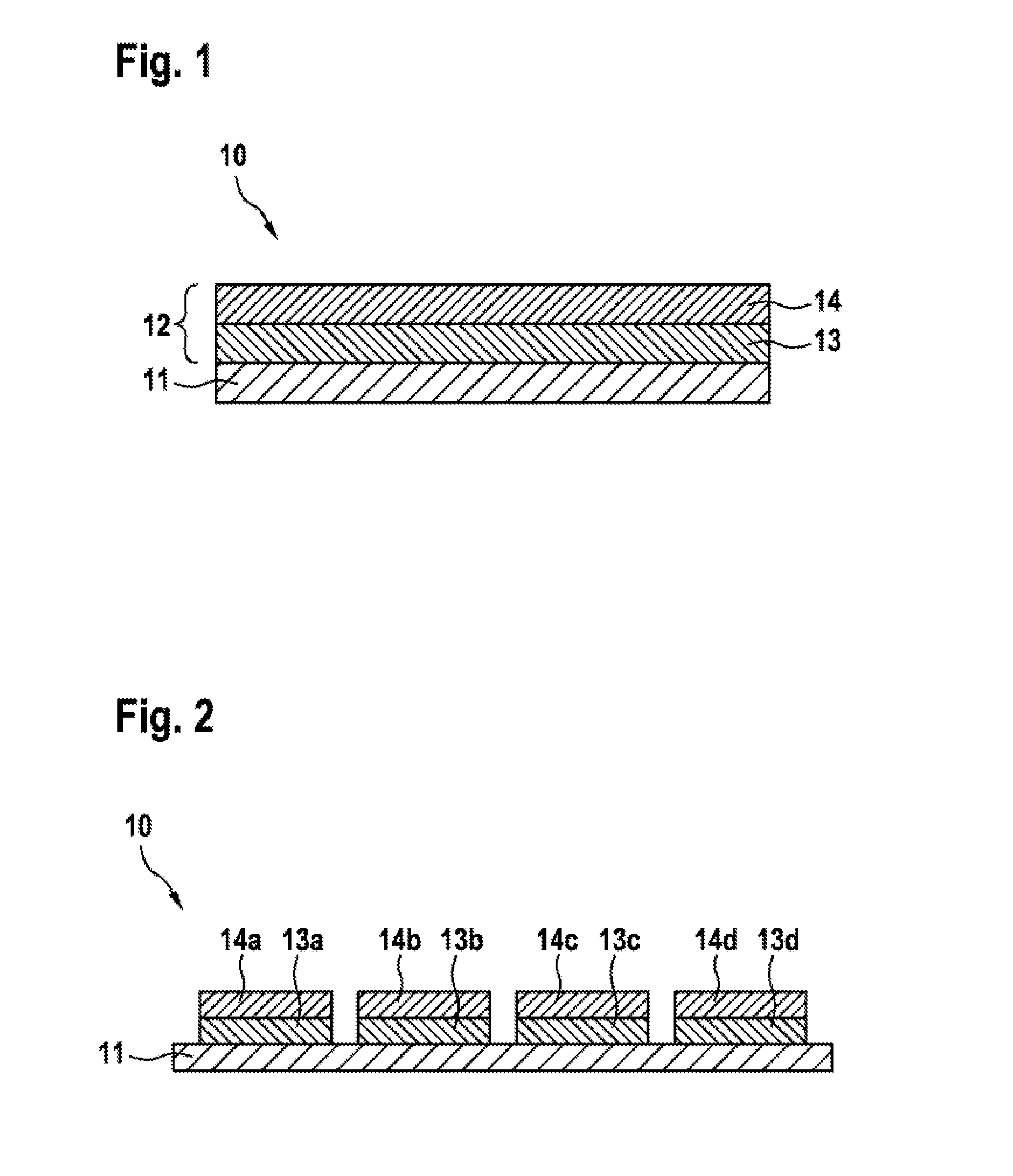Layered composite of a substrate film and of a layer assembly comprising a sinterable layer made of at least one metal powder and a solder layer
a technology of layered composite and substrate film, which is applied in the direction of soldering apparatus, superimposed coating process, manufacturing tools, etc., can solve the problems of lead-containing solder joining, assembly failure, and thermal stress of electric or electronic components present, and achieve the effect of reducing the number of legal restrictions
- Summary
- Abstract
- Description
- Claims
- Application Information
AI Technical Summary
Benefits of technology
Problems solved by technology
Method used
Image
Examples
Embodiment Construction
[0060]FIG. 1 shows a layer composite 10 comprising at least one support film 11 and a layer arrangement 12 applied thereto. The support film can be a polymer film, in particular a polyester film. According to the invention, the layer arrangement 12 comprises at least one sinterable layer 13 which contains at least one metal powder and has been applied to the support film 11, and a solder layer 14 applied to the sinterable layer. The sinterable layer 13 is composed of silver or a silver alloy, copper or a copper alloy and optionally a solvent. An additive which can, in particular, serve as redox partner can optionally be used in addition. The material of the solder layer 14 is selected from the group consisting of SnCu, SnAg, SnAu, SnBi, SnNi, SnZn, SnIn, SnIn, CuNi, CuAg, AgBi, ZnAl, BiIn, InAg, InGa and ternary or quaternary alloys of a mixture thereof and is preferably lead-free. The layer composite 10 can be used, in particular, for joining electronic components as join partners....
PUM
| Property | Measurement | Unit |
|---|---|---|
| thickness | aaaaa | aaaaa |
| thickness | aaaaa | aaaaa |
| temperature | aaaaa | aaaaa |
Abstract
Description
Claims
Application Information
 Login to View More
Login to View More - R&D
- Intellectual Property
- Life Sciences
- Materials
- Tech Scout
- Unparalleled Data Quality
- Higher Quality Content
- 60% Fewer Hallucinations
Browse by: Latest US Patents, China's latest patents, Technical Efficacy Thesaurus, Application Domain, Technology Topic, Popular Technical Reports.
© 2025 PatSnap. All rights reserved.Legal|Privacy policy|Modern Slavery Act Transparency Statement|Sitemap|About US| Contact US: help@patsnap.com

